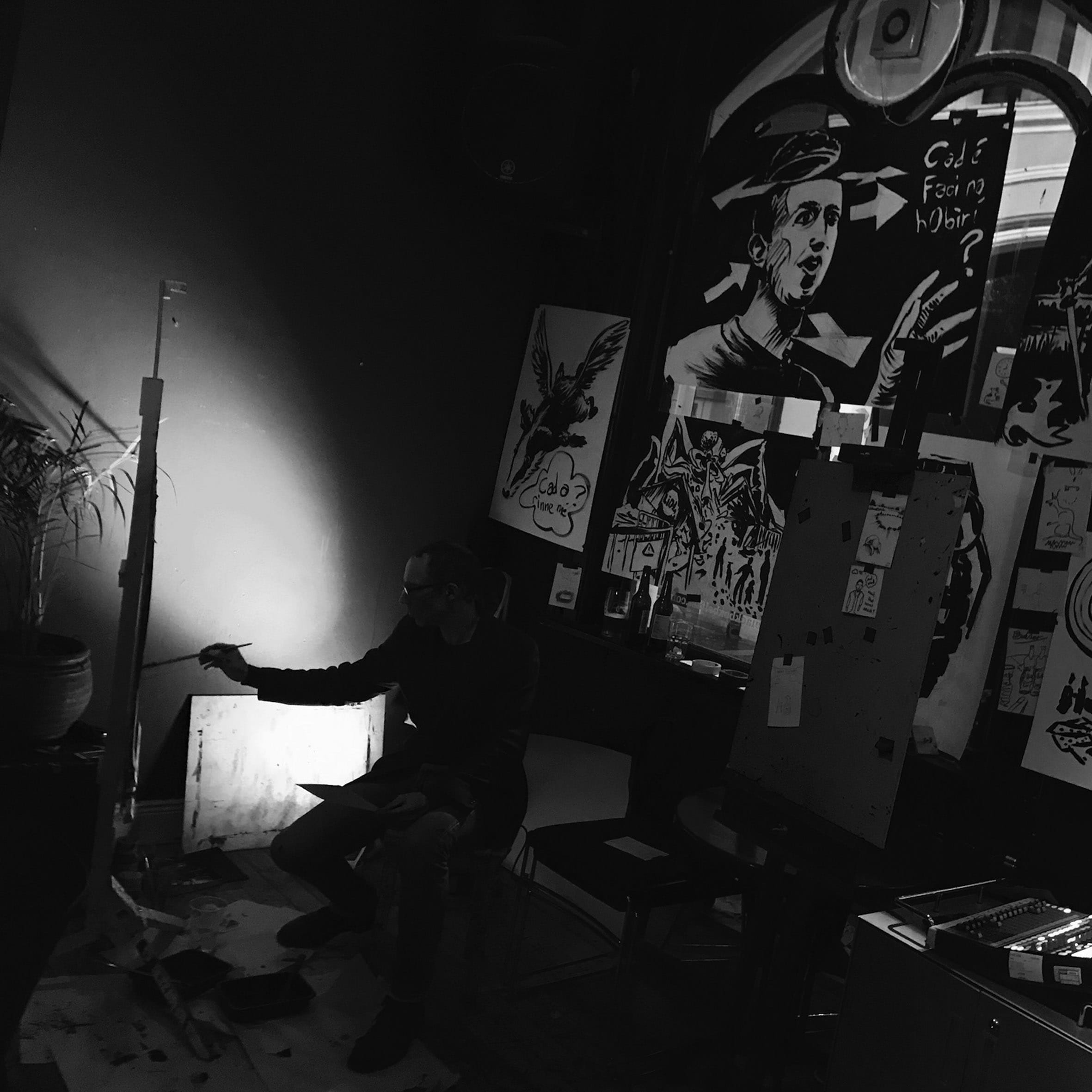Duncan Ross
Artist / Researcher, Ulster University (PhD)

Duncan Ross, Skull, April 2016 - present, monthly live drawing event, The Black Box, Belfast
Lessons from participatory art
Abstract
The shift toward participation within critical art practice can inform how we consider
illustration in terms of the aesthetic and the political. Particularly insightful are those strands of participatory art that apply illustrational methods and materials within experimental educational encounters. Examples of these include Tim Rollins and Kids of Survival’s Art & Knowledge Workshop (1982 - 2017); Ella Gibbs and Amy Plant’s Pilot Publishing programme (2004 - 2012) and the publicly-situated installations of Aisling O’Beirn.
Analysis often concentrates on the sites of knowledge production that are produced within such practices rather than on the images produced from them. However, at work within these examples are traditions of image-making that I consider in terms of three foundational characteristics of illustration: a symbiosis with the act, artefact and agency of drawing; the purposing of illustrative drawing toward graphic reproduction; and illustration’s connectivity to external texts.
For instance: Rollins’s reading programme for disadvantaged young people included the ‘jammin’ technique, a rapid-fire interpretive drawing activity made in response to the discussion of literary texts; in Plant and Gibbs’ illustrated magazine Laburnum Pilot (2004) the artists nurtured a community production team using group drawing and publishing activities; and O’Beirn developed a de-authored illustration style that framed her installation Some Things About Belfast (or so i’m told) (2006) as a setting for participant reflection on their role in cultural (re)production.
How do these practices inform our understanding of illustration? Alongside their staging of educational encounters they also involve relation, duration, process, situation and sensation, properties that have encouraged a view of art practice from the perspective of a collapsing distinction between ‘aesthetics’ and ‘politics.’ The tracing of such properties through the three material characteristics of illustration introduced above presents an opportunity to perceive illustration itself in terms of the aesthetic-political.
Bio
Duncan is a visual artist working in the fields of participatory public art and narrative drawing. He produces illustrations for a number of clients, primarily within the arts and often as integral aspects of curated programmes. He drew over 300 illustrations for The Vacuum (2002-2014), a free newssheet produced by the arts organisation Factotum whose projects are characterised by their humorous and anarchic interventions into public space. As an artist Duncan has designed and facilitated a number of socially-engaged and participatory visual arts programmes including commissions by The Golden Thread and PS2, two contemporary art galleries at the forefront of engaged-arts in Belfast. Between 2013 and 2018 he devised an on-going programme of drop-in public access art workshops called The Tuesday Drawing Studio which was particularly receptive to the varied interests and capabilities of its participants and generated a range of artistic outcomes and new partnerships. Duncan’s research broadly concerns practice-led methodologies at a nexus of drawing and community formation within which he is currently inquiring into drawing at an intersection of architecture, plant life, game worlds and trans-dimensionality. He teaches a creative writing module on the MFA course at Belfast School of Art.